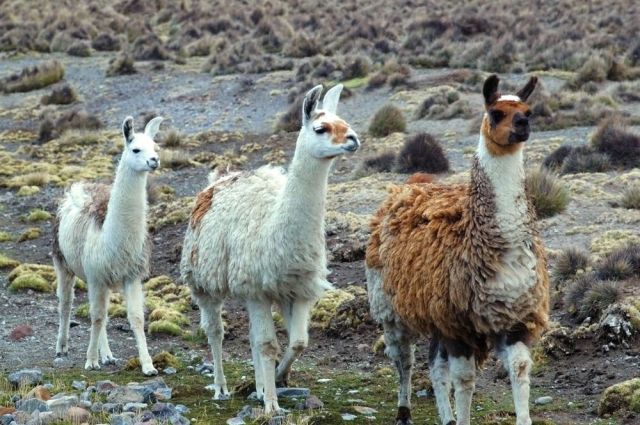There’s a good reason doctors advise you to get the flu shot every year. Influenza is a notoriously tricky virus, constantly mutating to outwit vaccines and claiming up to 650,000 lives per year. But a new study published in Science suggests an unusual ingredient may hold the key to foiling influenza once and for all: antibodies from llamas. Yes—big, fluffy llamas might some day help us fight the flu virus in people.
A team of international scientists led by researchers from California’s Scripps Research Institute transformed a set of harvested llama antibodies, or protective proteins that mobilize to protect the body from invaders, into a four-in-one mega protein capable of neutralizing 59 different strains of influenza A and B, Carl Zimmer reports for The New York Times. The scientists tested their synthetic antibody, which comes in the form of a nasal spray, on mice infected with deadly doses of the virus. In all but one case (a variation of bird flu never known to infect humans), the engineered antibodies offered complete protection against the flu, hooking onto the strains and preventing them from multiplying.
The science behind the study is surprisingly simple. As Vicky Stein writes for PBS Newshour, antibodies fight viruses by binding to proteins on their surface. The flu vaccine, which is redesigned every year to best combat the dominant strain of the mutating virus, works by introducing neutralized flu strains into the body and triggering the immune system’s production of flu-fighting antibodies. This preventative test-run prepares antibodies to recognize and latch onto the tips of a spiky surface protein known as hemagglutinin; unfortunately, hemagglutinin shifts so quickly that one year’s vaccine is rendered ineffective the next.
Llama antibodies are much smaller than human ones, BBC News’ John Gallagher notes, making them better-equipped to reach the nooks and crannies below the hemagglutinin tips, which are areas less likely to mutate than the surface proteins. As a result, the antibodies are more effective at stopping different flu strains in their tracks.
The llama-inspired nasal spray offers both breadth and potency, Scripps structural biologist Ian Wilson tells Science magazine’s Jon Cohen. Compared to the normal flu vaccine, which is largely powerless when faced with unexpected virus strains, the new synthetic antibody could be versatile enough to attack any flu strain that emerges.
“[Our approach] could potentially be used as a preventive treatment from year to year and protect against both seasonal flu as well as potential pandemics, such as bird flu,” Wilson adds in an interview with PBS Newshour.
The researchers introduced their powerful protein to mice test subjects in two ways: direct injection and a type of gene therapy that packaged the antibody in a harmless virus before sending it up the animals’ noses. Once the antibodies’ genetic blueprint embedded itself within the host, the mice’s nose cells began producing the antibodies themselves. Both methods proved successful, and as Melissa Healy writes for The Los Angeles Times, the gene therapy avenue could prove particularly beneficial for the elderly and others with weakened immune systems. Rather than relying on these compromised systems to generate antibodies, the “passive transfer” represented by the unique delivery system promises offers its own production mechanism.
Additional research must be conducted before the technique can be added to the medical arsenal, The New York Times’ Zimmer notes. It’s possible the human immune system will view llama antibodies as foreign invaders and begin attacking rather than accepting the proteins. And, even if the antibodies prove safe for human use, scientists will need to tinker with the dosage to determine the ideal level for flu-fighting.
Still, Jonathan Ball, a virologist at the University of Nottingham who was not involved in the study, told the BBC’s Gallagher the treatment, if proven to work across a range of flu strains, will be “the Holy Grail of influenza.”
He concludes, “There will be an appetite, but it depends how well these things work, how easy it is to produce and also how costly it will be.”








